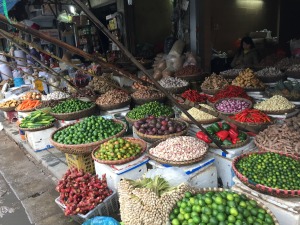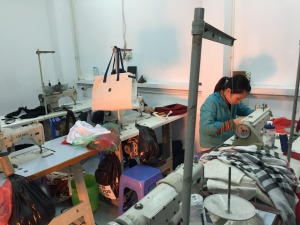One thing that has continuously been on my mind throughout our time in Hanoi is the lack of care for quality. On the streets, people drink water they know is polluted and contaminated, cook food without a way to store and preserve the ingredients, yet it doesn’t bother them. It doesn’t quite make sense why Vietnam wants to expedite their development and recognition on a global basis, but they ignore the simple things that go a long way in increasing quality. When traveling out to the temples and tours, it became even more evident that Vietnam simply lacks quality standards across the board. One instance where this was displayed was when I was looking out the window on the bus and saw a rice paddy field or some sort of cultivation area next to a dump with tons of trash on one side, and a graveyard on the other. Not only is that not sanitary, but it diminishes the quality of those agricultural products, which eventually is sold on the street to local citizens. I was shocked because Vietnam is a developing country, but I don’t think space is the issue, so is it that hard to use a piece of property for proper disposal methods where it won’t pollute the water and crops surrounding it? Most developed countries, regardless of their geographical location and climates, are able to have a stable and clean water supply, which increases the quality of their living standards.
Another instance where this was very clear was at the actual temples housing the massive Buddha and Confucius statues. The entire place is and can be a major tourist attraction that would bring in significant income, yet there was just a ton of buildings, fields, and fountains under construction, but nowhere near completion. The best way to describe it is a magnificent view and knowledgeable experience of the history and culture of Vietnam plagued with abandoned Catapillar trucks and piles of workers lunch trash. Although it was mildly overcast, I have seen buildings be built in harsh conditions so why aren’t the Vietnamese itching to complete these projects? It is only beneficial to all of them.
The reason I found both of these instances quite astounding was because Vietnam is a developing country with profound potential, as they possess all of the pieces of the puzzle. In an economic sense, people associate high quality with a high marginal benefit, meaning their experience was enhanced because of the quality. I think it’s fair to assume that if the temples had precious green fields with glistening fountains and completed the buildings with an elegance raising the “wow” factor of a tourist, then one can reasonably assume the temples would get more tourists, and income would dramatically increase. If the amount of trash was limited and trash disposal procedures could be restructured to where they don’t overflow and pollute into agricultural fields, then the quality of those crops increase, meaning their “street value” increases, putting more money into vendors pockets. It could also increase the overall appearance of the countryside, yet again increasing the “wow” factor, making it more attractive. I am looking forward to seeing if this is a common thing throughout all of Vietnam or if it is just in Hanoi.
 Follow
Follow
